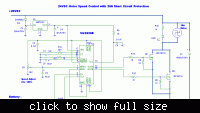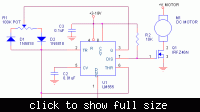rotorgoat
Newbie level 2
I have a 28V fan that is rated at 16 Amps and I would like to be able to adjust its' speed rather than using fixed resistors for Hi, Med & Lo. The origional application for this fan used 3each 1 Ohm, 100 Watt in parallel for the Low speed and direct connection for Hi speed. I've tested it on my bench with a variable power supply and the fan starts at about 9 VDC and of course increases to max at 28VDC.
What would the spec's be for a V/R reostat capable of handling this load? Also what suppliers would have this available?
What would the spec's be for a V/R reostat capable of handling this load? Also what suppliers would have this available?

